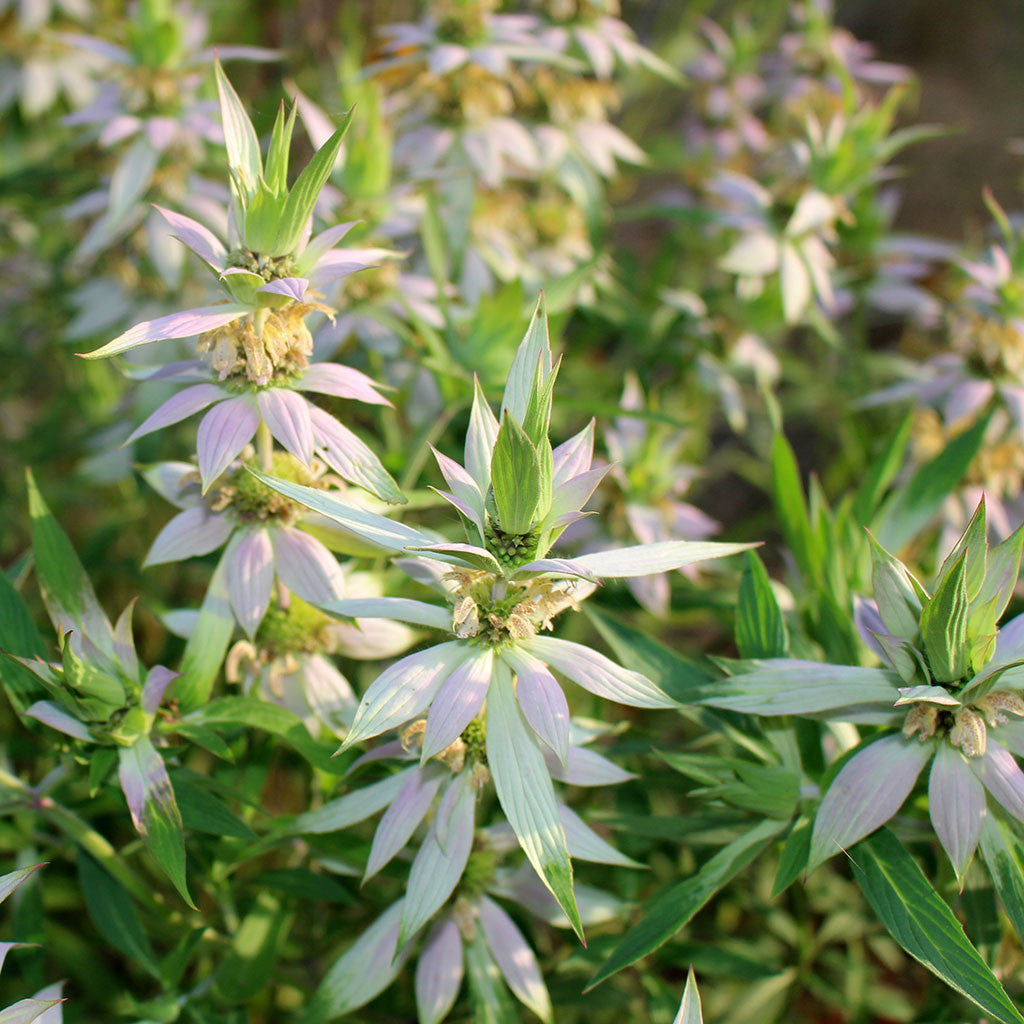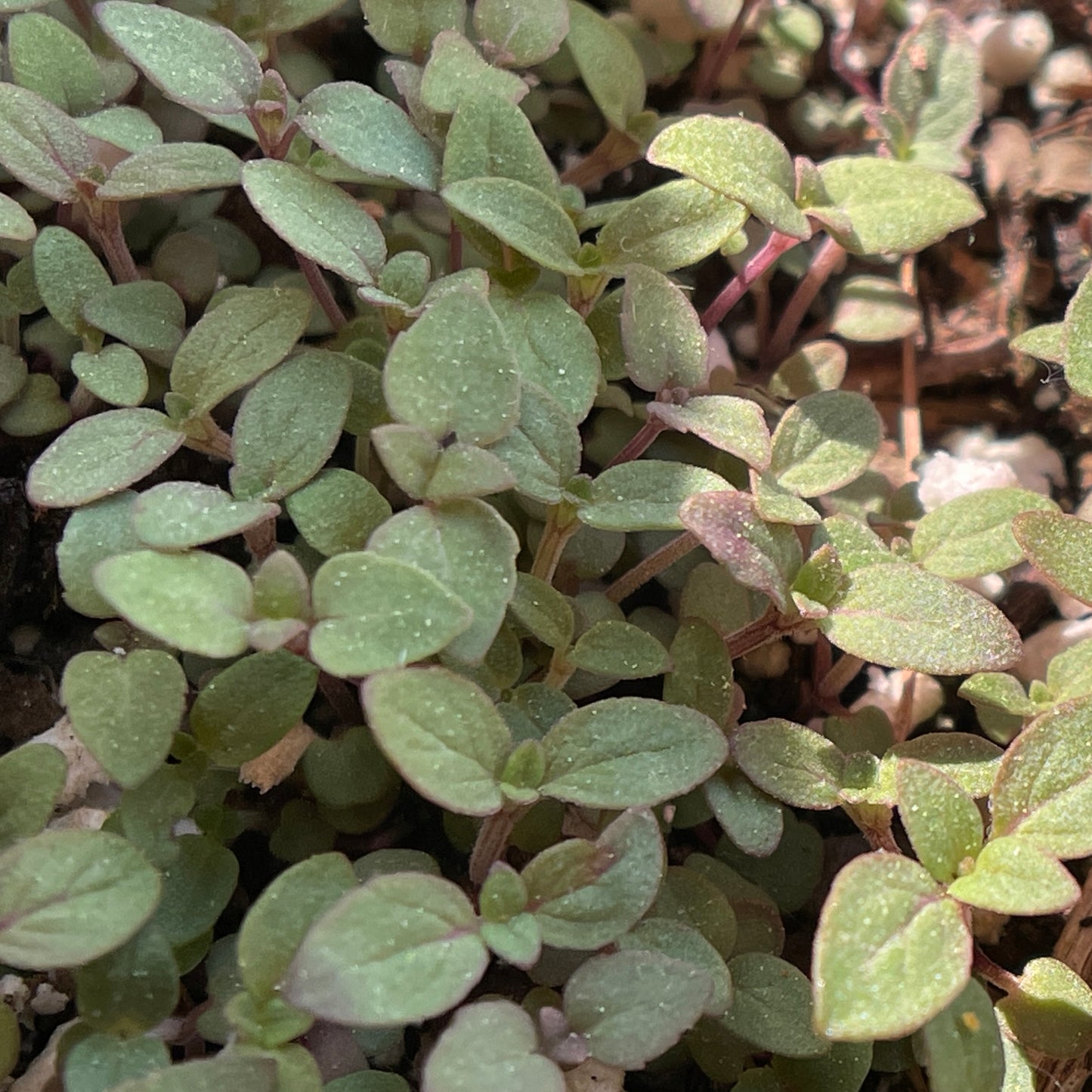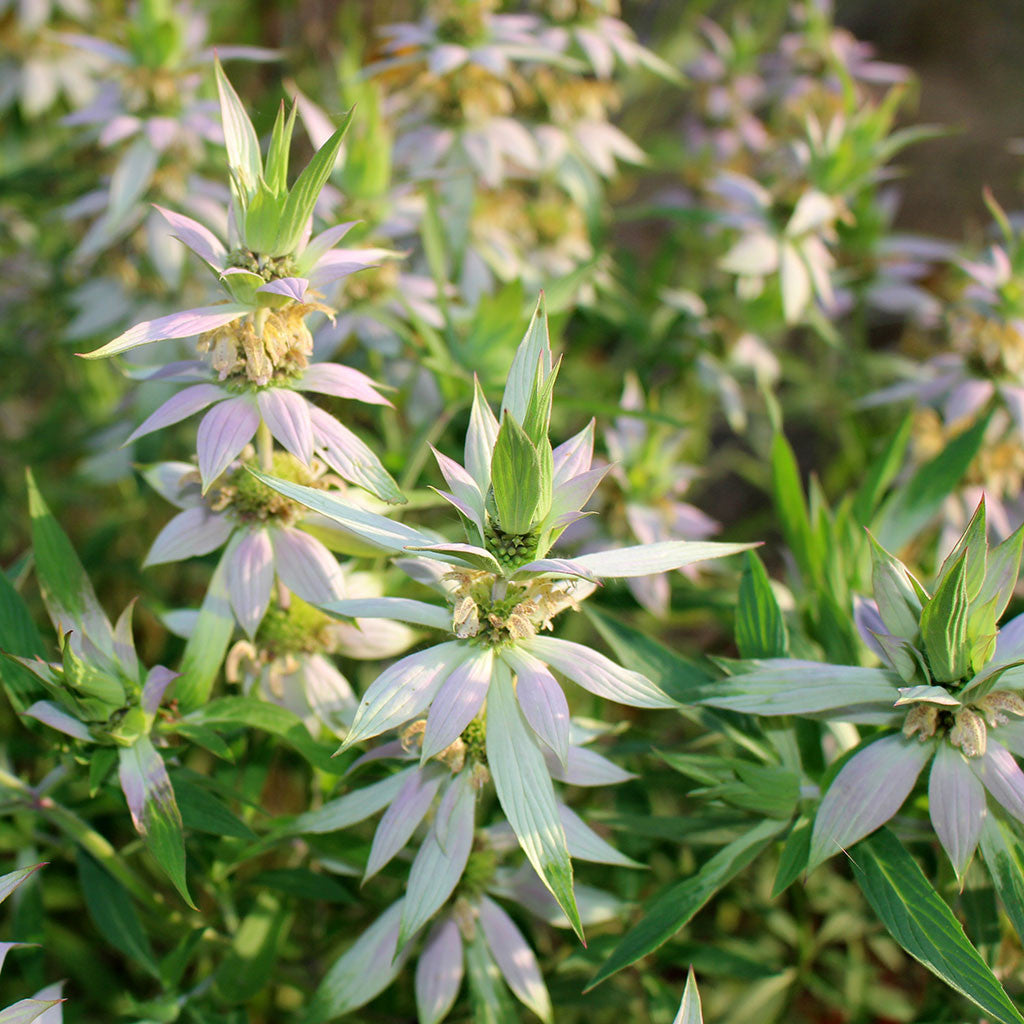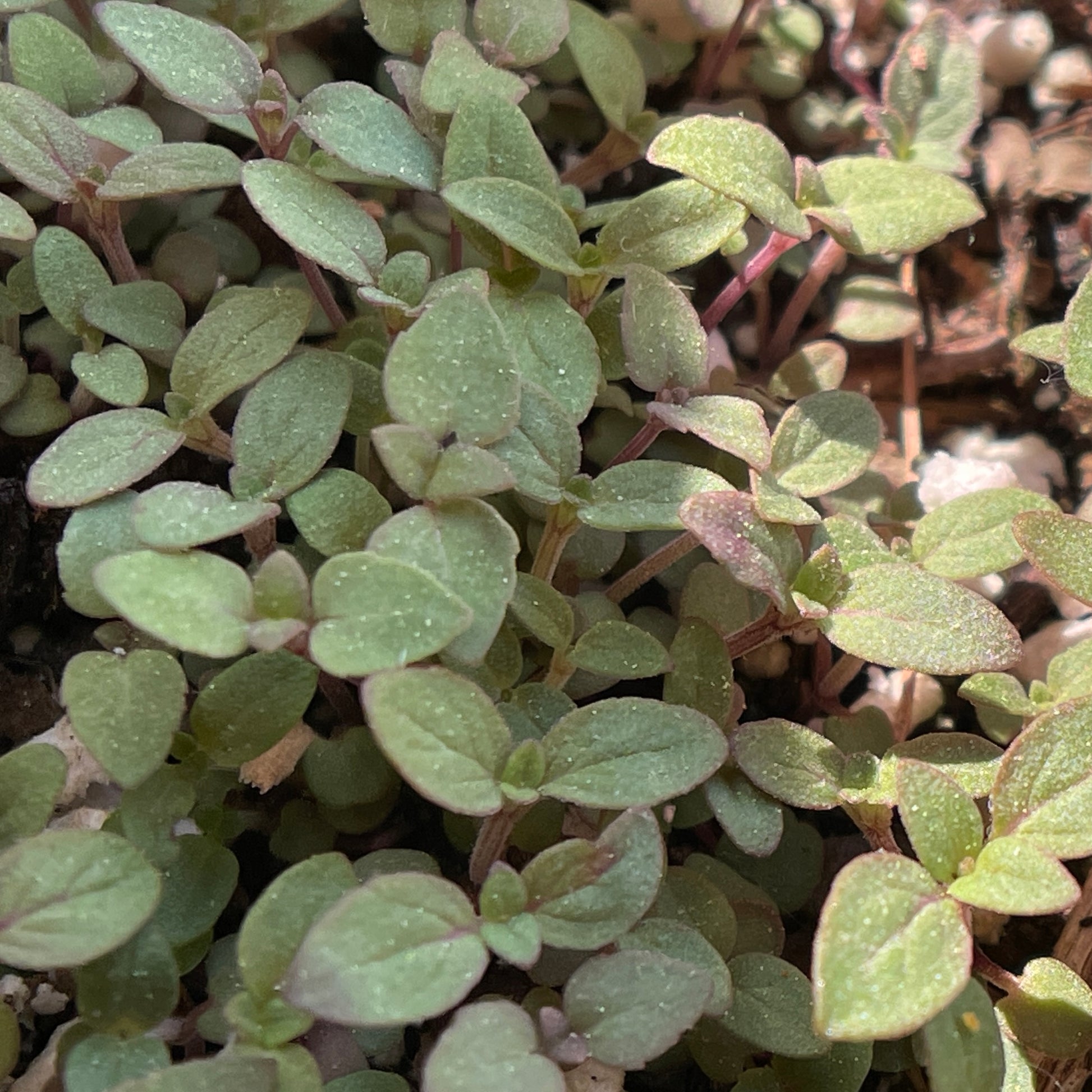Bee-balms — Spotted bee-balm (Monarda punctata) Seeds
Bee-balms — Spotted bee-balm (Monarda punctata) Seeds
In stock
Couldn't load pickup availability
Blooming in late summer with pale pink, tiered flower clusters and gray-green foliage. This plant makes a dramatic garden display and attracts an interesting array of pollinating insects. Foliage can be used for tea. A biennial species, but will self-sow if happy in its location. Deer-proof.
Native to Maine: No. Native from southern New England south and west to the prairie states.
Growing conditions: Sun to part shade in dry soil
Grows up to: 2'
Blooms: In late summer
Pairs well with: Blue-eyed grass, butterfly milkweed, Scotch bellflower, sundial lupine, and New Jersey tea
Natural habitat: Dry sandy or gravelly soils of beaches, pine barrens, woodland edges, and roadsides
Seeds per packet: 50-100
These seeds do not need a winter or cold period to germinate. Sow in pots November through April. A great species for beginner seed-sowers.



